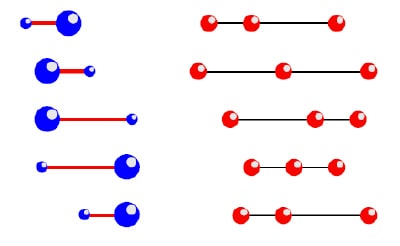Physicists in Israel have designed a tiny swimming robot that could help to answer fundamental questions in biology and may also have applications in medical nanotechnology. The "micro-swimmer" also outperforms, in theory, other man-made swimmers and simple biological organisms (New Journal of Physics 7 234).

“There is vision in nanotechnology of tiny autonomous robots going from one place to another in the human body and fixing things,” says Joseph Avron of Technion-Israel Institute of Technology in Haifa. “One major challenge is to figure out how to do this if you are very small – the modes of locomotion that are efficient when you are big will perform poorly if you are small.”
The new swimmer, known as “pushmepullyou”, consists of two spherical elastic bladders that exchange volumes of material with each other during each swimming stroke. Avron and two colleagues – Oded Kenneth and David Oaknin – predict that their robot will move more efficiently than bacteria and other biological organisms that move by beating a flagellum. Moreover, the pushmepullyou travels faster than other artificial swimmers, like three-linked spheres, because it swims a larger distance with every stroke (see figure and movie). The Israel team says that a real pushmepullyou swimmer could be made by filling the bladders with a low-viscosity liquid.
The movement of the two-sphere micro-swimmer resembles the wriggling motion of certain protozoa and species of a microorganism known as Euglena. Some biologists think that this motion, which is called metaboly, is related to feeding, while others speculate that it is used for swimming instead. The work of Avron and colleagues suggests that metaboly is an efficient swimming mode.
The team is now studying nanoscale-sized robots that could swim inside channels in the body – such as inside the spine, heart or lungs – and take images or deliver drugs. “We are also studying swimmers that are so small that quantum mechanics effects become relevant,” says Avron, although he points out that this work is quite remote from potential applications at present.



